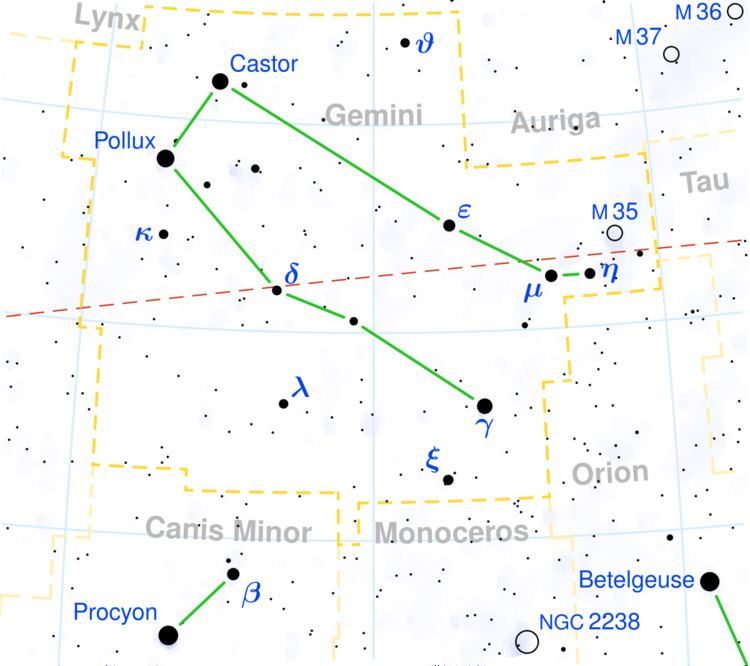 | ||
Punarvasu) is a Nakshatra in Hindu astrology, which refers to the two brightest stars in the constellation of Gemini: Castor and Pollux.
Contents
In Malayalam, Punarvasu is called Punartham. It is also known as Punarpusam in parts of South India.
Mythology
Punarvasu extends from 20 degrees 00 minutes of Mithun (Gemini) to 03 degrees 20 minutes of Kark (Cancer). The Hindu god Rama was born under this Nakshatra. There is also a general belief that men born under this nakshatra have only male children. There have been exceptions to this common belief.
This is the birth nakshatra of Lord Rama. The word Punarvasu is derived from Puna+ Vasu, which means return, renewal, restoration or repetition. The 12 Adityas were born of Kasyapa in the womb of Aditi. The 12 Adityas are Vishnu, Indra, Vaga, Twasta, Varuna, Aryama, Pusa, Mitra, Agni, Parjyanya, Vivaswan and Dinakar. The mother Aditi of whom the Gods are born is the repository of everything good-truth, generosity, magnanimity, purity, aristocracy, beauty and renown. It follows that this star is the cause for these virtues. To start afresh after having once broken off, to start a new life, to come back from a distant land-all. Punarvasu signifies these. It stands for freedom from restriction and limitation, and boundless space.
Practice
By the traditional Hindu principle of naming babies according to their birthstar (see Jyotisha), the first names should start with the following Sanskrit letters for those who are born under the Nakshatra: Punarvasu
Ke (pronounced as in "Kevin")
Ko (pronounced as in "cocoa")
Ha (pronounced as in "ha ha") for example Harika,Harini,Harshitha,Harish
Hi (pronounced as in "Hinterlands")
